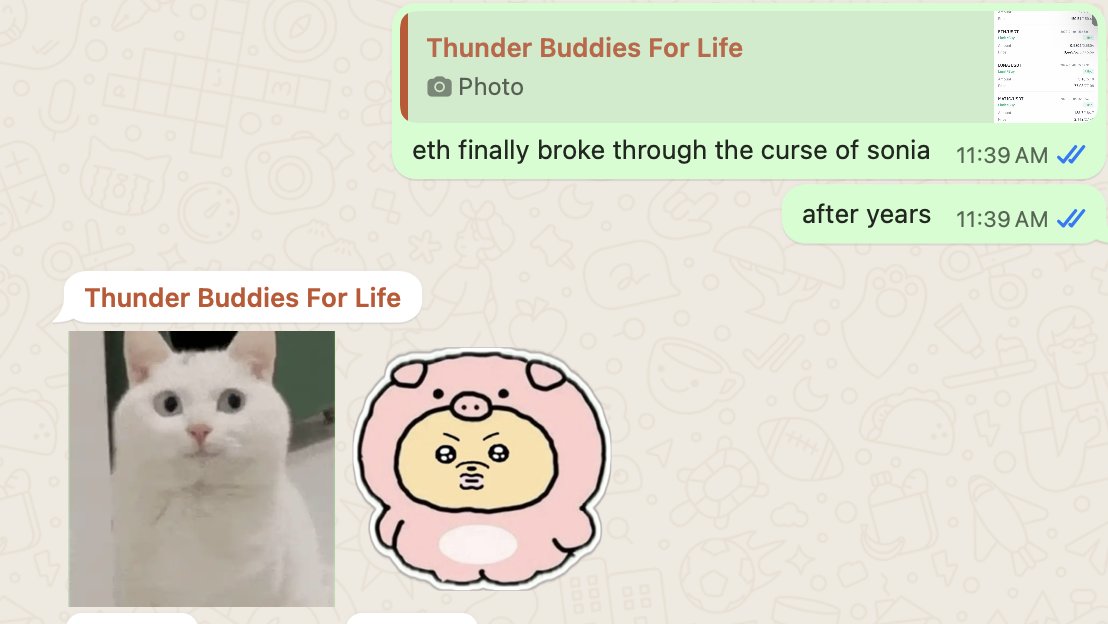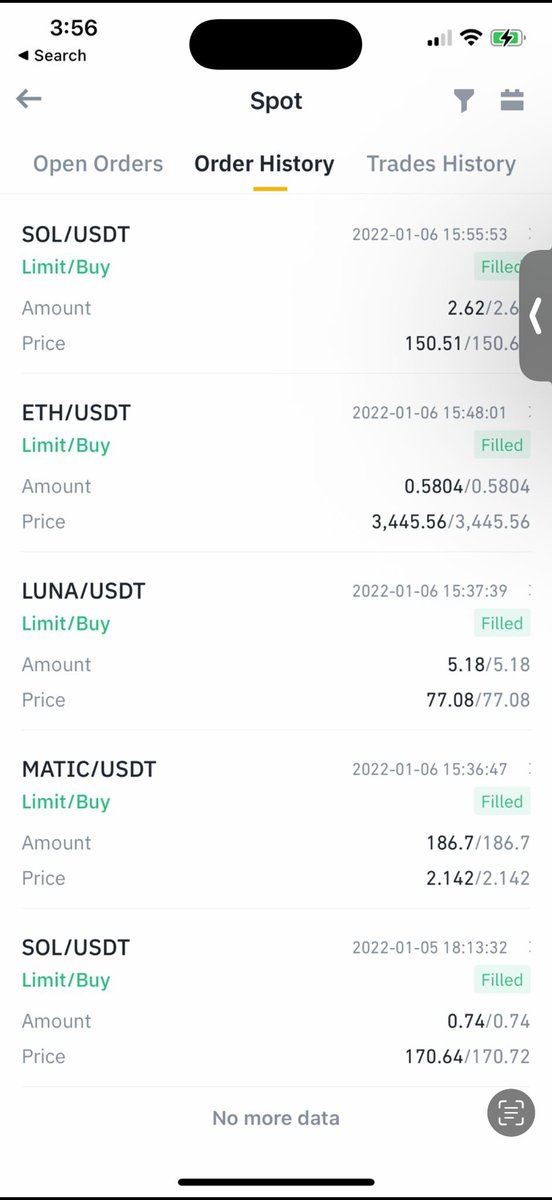Original title: What Liquid Funds Are Buying
Moderator: Jason Yanowitz, Empire
Guests: Seth Ginns , Cosmo Jiang
Compiled & Compiled by: Janna , ChainCatcher
This article is compiled from a video interview program on Empire, a channel owned by Blockworks, on August 18, and the guests participating in the interviews were Seth Ginns, managing partner and head of liquidity investment at CoinFund, and Cosmo Jiang, head of liquidity token strategy at Pantera Capital. They conducted in-depth discussions on topics such as the current liquidity fund selection logic and the impact of digital asset treasury (DATs) on the crypto industry. Seth has always believed in the fundamental value and policy dividends of the crypto market, and he explores token opportunities with a stock-like investment logic, firmly believing that DATs are a key bridge between traditional finance and the crypto field. Cosmo is based on risk control, carefully selects tokens in the current differentiated market, always anchoring core fundamentals such as cash flow, and is optimistic about the intersection of AI and crypto, and the two outline the current situation and development prospects of the crypto liquidity fund industry from different perspectives.
TL & DR
The core of liquidity funds is to select tokens based on fundamentals, similar to stock analysis, through spot-based and derivative-supplemented trading, focusing on institutional-level infrastructure and risk management.
Seth and Cosmo are both bullish on So lana, with the former believing that Sol ana is expected to become a leading L1 blockchain, and the latter deploying Ethereum through options, as ETH is a traditional financial entry point and has a catalyst for commercial transformation.
Stablecoins are a key area, Athena stands out in the field of decentralized stablecoins, and PSMA is a stablecoin-focused project, with significant ICO oversubscriptions, which will benefit from the promotion of relevant bills.
DATs are a bridge for traditional capital to enter the crypto field, reducing investment friction and educating investors, as cases such as Bitmine show that their information disclosure is key to attracting funds.
The integration of crypto and traditional finance is accelerating, tokenized stocks will be traded 24/7, exchanges such as Nasdaq have been deployed, and traditional institutions need to adapt to the all-weather market model.
The DeFi ecosystem and the intersection of AI and crypto will benefit from DATs, which provide income opportunities, which are popular themes in traditional markets and have great potential.
Regulatory policies promote industry standardization, DATs are in their early stages, and traditional large capital has begun to enter the market, which will promote the further integration of the crypto market and traditional finance in the long run.
(1) Definition and institutional positioning of liquidity funds
Jason: I would like to start with the concept of liquidity funds. This industry has always been dominated by VCs, and about 98% of the institutional capital flowing into the industry goes to VCs, and that's changing. What is a liquidity fund? What is the strategy of a liquidity fund? How many tokens do you hold? Are you actively trading, or holding these tokens for the long term?
Seth: An interesting dynamic in cryptocurrency is that private companies have a liquid investment vehicle that anyone can invest in relatively early in their lifecycle, and that is tokens. I grew up in the public stock market, and if I start to see the institutional infrastructure improve, then I can form a liquid crypto fund that truly meets institutional standards for this expanding token space. At the end of the last decade, I saw this start to emerge. In early 2020, I joined Jake and Alex's CoinFund, which mimics what I do in the equity space, so evaluates investments based on fundamentals. Value capture was previously achieved through tokens, with far fewer tokens. Blockworks has recently put together a good checklist of what constitutes an excellent, transparent, and investable liquidity token. But they're starting to look more like stocks now, where you can simulate revenue, arrive at target prices, and build a fundamental-focused portfolio. Moreover, there are now governments that are promoting pro-cryptocurrency policies, and in the future these will become stocks. So, in the cryptocurrency world, this convergence and expansion of market capitalization tables and capital structure parts is being staged.
Seth: As an investment firm, the responsibility is to find the best, fundamental-based opportunities in terms of venture capital and liquidity. In terms of liquidity, we implement an absolute return strategy. So investing in long-term growth opportunities, we think those opportunities are targeting a very large market, the team is excellent, and there is an opportunity to reap huge returns based on fundamental evaluation over many years. It is to apply the basic hedge fund practices to liquid investments in cryptocurrencies, and because these tokens are liquid, we are able to manage risk.
Jason : How much overlap is there between Cosmo and managing public equity funds and managing liquid token funds?
Cosmo: From my point of view, the two are the same. Perhaps let's talk about the classification of liquidity funds first. People are not fully aware that different types of funds have very different responsibilities. At the highest level, there are market-neutral funds that aim to generate returns without any market-directional risk; Then there are more absolute return funds whose responsibility may be to take on some directional risk; There are also pure, fundamental-based long funds whose role is to take on a lot of directional risk and hope to make meaningful excess returns on that basis. This is a bit like classic stock picking thinking, picking good stocks, in this case, picking good tokens, which should outperform the market in the long run. The confusion now is mainly that in a market as volatile as cryptocurrencies, the performance of directional funds can obviously be very volatile. Investing in crypto is very attractive because the market is highly volatile, which increases the returns and spreads available to market-neutral funds, so this distinction is less obvious when market-neutral funds can make huge returns anyway. Moreover, over the past three years, everyone has been dealing with a huge wave, which is the rise of Bitcoin's dominance. In a world where Bitcoin is one of the top 5% of crypto assets, it becomes a benchmark.
(2) The contradiction between Bitcoin dominance and fund management
Jason: Talk about the responsibilities and how you manage the relationship between fund investors and Bitcoin dominance. I ask because Bitcoin is one of the best-performing assets in the market, but fund investors don't pay fund managers to just buy Bitcoin on the open market.
Cosmo: In a way, if you know Bitcoin will be the best-performing asset, you should go long on Bitcoin. But as a risk manager trying to build a repeatable process over many years, such a process is unlikely to allow you to hold 100% of your Bitcoin. It's likely that you have a long-standing risk management threshold that works in a so-called conventional environment, which could mean that your maximum concentration on any token is 25%, 30%, maybe 40%. In this case, if you only hold 25% of Bitcoin, and Bitcoin is the best-performing asset, you will of course underperform Bitcoin. So this becomes a problem, especially when Bitcoin is more accessible and is once again the most recognized asset. And the success of liquid funds lies in fund investors choosing the right fund for them, and as a manager, you choose fund investors who understand what you're trying to achieve, otherwise you'll get caught up in these difficult conflicts to deal with.
Seth: There's also a very interesting dynamic where Bitcoin is kind of like a CNBC cover story, and when they talk about crypto, it shows up on the cover of the Wall Street Journal or the Financial Times. For the mainstream media, this is what appeals to them. Interestingly, there is a lot of positive fundamental momentum in the decentralized finance, stablecoin space, with very innovative base layers and innovative companies emerging, but every time there is a buy order in the market, the Biden administration will suppress this space again, and then money will flow from altcoins to Bitcoin. So the focus on Bitcoin is a dynamic, and people focus on Bitcoin first. We are entering a period of government bringing more positive dynamics to cryptocurrencies, faster than anyone here expected. Obviously, at the end of the first quarter, there were widespread concerns about tariffs, but as these concerns began to subside, the market is now starting to see excitement about stablecoins. When a government moves from executive orders to actually pushing the legislative agenda and investing political capital into the development of cryptocurrencies, this is a truly groundbreaking long-term growth moment for cryptocurrencies.
Cosmo: Digital assets are divided into Bitcoin and blockchain technology. Bitcoin can survive, develop, and succeed independently of the success of blockchain technology. Bitcoin basically has little to do with blockchain as a technology, except that it runs on the blockchain. They are two very independent risk factors, fundamental factors. So if you want Bitcoin, you should go for a Bitcoin ETF. If you want to get your hands on blockchain technology, you'll have to bet that blockchain technology will eventually have a ton of productive use cases.
(3) Market differentiation and portfolio construction
Jason: Seth, when you join Coin Fund, you buy 10 tokens at random, and 9 of them will go up. The market is very different now. Now you blindly pick 10 0 tokens, maybe only 2 will go up and 98 won't. Talk about the market or portfolio building.
Seth: It's a good market for liquid funds. In this environment, if you put in the effort, have good connections, participate in developer conferences, and be able to see the direction of technology, you can get very good rewards. The biggest setback over the past few years has been not seeing these positive fundamentals reflected in token valuations after putting in effort. The core premise of my investment in altcoins is that these are long-term growth opportunities, with a huge and expanding target market, very savvy developers and entrepreneurs leading these businesses, and if a startup enters the seed round or Series A stage and is chosen correctly, these investments should significantly outperform a high-quality asset like Bitcoin, although Bitcoin still has a lot of upside.
Cosmo: The market has been really fragmented this year. I've been a portfolio manager in stocks for a long time and am used to a lot of diversification, but this year, the reason why Bitcoin has so many problems compared to all other tokens is that Bitcoin is up 24% this year, and by the end of July, the top 100 tokens were down an average of about 30%. So in a world where the average token is down 30% and Bitcoin is up 24%, the contrast gets pretty crazy, with only about 5% of the top 100 tokens going up this year. So in a way, it's a token pick market, but unless your token is Bitcoin, good luck.
(4) Token selection and trading strategy
Jason: How do you pick your tokens? How many tokens do you typically hold at any one time?
Cosmo: At the core of what we do is fundamental assessment. We are looking for a management team that we can trust, who can be evaluated, and a business model with a unique economic model, or a project that can evaluate its future economic condition. And the cash flow of all assets is what matters. Interestingly, the initial discussion about value capture revolved around tokens that need to be repurchased if revenue is generated, or returned to token holders through other methods such as staking. I hold about 10 to 15 tokens. The first half of the portfolio, which is 50% of the positions, is 5 tokens. So the concentration is quite high. No matter what field I am in, I will have a portfolio of 20 tokens. But as a solo analyst, I can't analyze more than 10 tokens, but I have the resources and a strong team, so I can scale to 20.
Jason: You keep talking about fundamentals, can you elaborate on what fundamentals mean?
Seth: Growth is a key factor, and any on-chain metric is priced in almost instantly. If on-chain metrics change, like looking at revenue multiples, if you look at Ave and its revenue multiples, you'll see that as revenue rises, the multiples remain the same, meaning revenue growth is reflected in the token in real-time. There will be no advantage from a 25% increase in revenue in the last month, as this is already priced in. What needs to be understood is the opportunities that are coming and whether revenue is likely to continue to grow at such a rate, whether it is likely to accelerate or decelerate. And multiples reflect the acceleration or deceleration of revenue. If in the early stages of a real significant acceleration, multiples are usually seen above the trading level.
(5) Market narrative and the existence of non-fundamental tokens
Jason: How do you approach the idea that the market is still largely narrative-driven?
Cosmo: The word narrative is a way for humans to take shortcuts, it's actually a more complex system. And I do think there are a lot of factors in this, but there is also a question of time frame, and there is likely to be a truth behind the "narrative" that drives the action. In a short period of time, the market tends to be driven by narratives, or it is easy to use narratives to explain things as they happen afterwards. But in the long run, tokens with more sound fundamentals significantly outperform those with less sound fundamentals. We have a fundamentally sound portfolio, and out of the top 400 tokens, there may be 75 to 80 tokens that fit into this category, and these tokens have outperformed their fundamentally unsound counterparts by about 20% or 30% on average this year. In traditional markets, this may not sound like a huge number, but in crypto, it is a huge number.
Seth: First of all, in traditional markets, meme stocks are the best performers. Second, the ability to directly drive value capture and change token fundamentals to make it more tied to actual value capture may be more than the dynamic systems of traditional stock markets. But even in the traditional stock market, Tesla was the most shorted stock in 2013, 2014 because people felt that it was a meme stock that far exceeded its potential from a fundamental point of view. So in cryptocurrency, we are more capable of getting a project to start a real fundamental value capture perspective. Bonk is a great example on this list, with well-performing tokens having good forward momentum in terms of fundamental penetration.
(6) Timing of token transaction execution and selling
Jason: Part of your job is to pick the right token. There are two other things that I am interested in, one is when to sell tokens and the other is how to execute trades. And what tokens do you hold now?
Cosmo: Excess returns are generated by the choice of tokens. The advantage of other managers may be the acquisition of tokens or the execution of strategies, such as market-neutral managers, market makers, etc. And the vast majority of our performance comes from token selection, not actual execution. That is, we mainly trade spot, as well as some derivatives to obtain liquidity elsewhere. Because funds registered in the United States cannot be traded on international exchanges. This year we have a very different and effective investment area is Ethereum. In May, ETH positions were established mainly through the options market. The argument at the time was that everyone was disappointed with ETH, but ETH is still the second-largest token by market capitalization, where traditional finance enters the crypto orbit, and where most stablecoins are located. Over the past six or seven months, there has been a lot of disappointment in ETH's price performance against Bitcoin. From the Ethereum Foundation to project leaders, they are trying to get ETH back on track and cultivate a more commercial mindset.
Cosmo: I can say it at a higher level. Our company's largest position remains Solana. We remain very bullish on Solana as the leading L1 blockchain. We now express a lot of what we think about other tokens through DATs. So we're the largest investor in Caner Equity Partners besides SoftBank and Tether, which is a large position we hold as an alternative to Bitcoin, and we're also one of Bitine's largest anchor investors, so hold it as an alternative to ETH. One token that has been performing very well recently is Athena. With the explosive growth of stablecoins after the passage of the Stablecoin Act, this is one of the things that is very exciting about guiding and establishing the stablecoin space after the passage of the US Stablecoin Act. Paul Atkins gave a talk on decentralized finance last week, and they are really pushing for decentralized finance lending. Athena is very pro-cyclical in a pro-cyclical environment.
Jason: Before I wrap up this topic, I want to talk about a few other things about DATs, but before I end the discussion about tokens and portfolio building, when do you sell?
Seth: When there is a token with strong fundamentals, fast growth, and good performance, when it has a large decline, we risk manage that position, which adjusts for the volatility of the token. We also have weekly portfolio reviews and risk management sessions on macro, crypto top-down scenarios, top and bottom performers in the top 100, what works and doesn't work in the portfolio, governance proposals, key news, charts for the week, and then selects each token in the portfolio and tokens that are being considered for inclusion or have recently been removed from the portfolio.
Cosmo: Starting with my thinking about risk management, starting with portfolio construction, there is always a top-down view of where we are in the market, how much we want to invest in any particular industry or factor, like large cap, small cap, decentralized finance, non-decentralized finance, L1s, etc. This plays an important role in our portfolio construction and relative size, which may drive some non-specific or non-bottom-up decisions. But from a bottom-up perspective, when we look at any position in isolation, there is a strong focus on the process, and we check the KPIs of our tokens at least once a week. When investing in high-growth stories, want them to run. But when things are trading at extremely high valuations, the fundamentals must continue to improve, otherwise it will be tough once the market smells signs of weakness. So we pay close attention to weekly tracking. I wouldn't sell if revenue dropped month-over-month for several weeks in a row, but that would increase the pressure and we would ask ourselves why and reconsider the size of our positions.
(7) Discussion of DATs
Jason: One thing that exists in the stock market but doesn't exist in crypto is investor relations. There may be an investor relations portal, an investor relations team, quarterly earnings conference calls. None of this exists in crypto, and I'm just starting to see some signs. If a founder who issued a token was listening to this, what advice would you give them on how to manage investor relations with liquidity funds?
Cosmo: People have to realize that when you have a liquid token, it's a huge responsibility to do so, because it's in the open market right now, so you should interact with your ultimate stakeholder, which is your token holder. And as the market began to focus more on fundamentals than pure hype or narrative, management teams began to realize that they had to focus on cultivating a healthy shareholder-investor base, so this was crucial to the long-term health of the token.
Seth: Totally agree, it's interesting that during the previous administration, a lot of teams were afraid to play the role of investor relations because it would make them look less decentralized enough. Now that there is a government moving in the right direction from a policy perspective, encouraging team participation, which encourages more teams to consider the investor relations function, DATs have played a big role in this.
Jason: Should every founder who owns a token, has a reputation, and has fundamentals now consider DATs?
Seth: DATs are doing a couple of things, one is to promote education, play an important role, educate traditional investors about what the protocol is doing, what Bitcoin, ETH, Hyperliquid is doing, while also reducing some friction. Many traditional stock funds cannot directly hold tokens, and many tokens do not have ETFs, and current ETFs usually cannot be staked and generate income. So DATs overcome a lot of friction, and the flow from traditional finance is huge compared to the flow of crypto-native funds. But over time, more bridges like this will be seen, and then after the passage of the Market Structure Act, the Heritage Foundation invests directly in the token.
Jason: Looking at DATs from a broader perspective, the industry has two views on them. One is a temporary trend, and the other side will say, this is a new reality, and you have to be ready for it
Seth: This is exactly the path that leads us towards the convergence of the cryptocurrency market and traditional finance. The regulatory and policy environment is opening up and could be the second largest growth opportunity after AI. And it's more direct and investable, more accessible, and clearer about where to deploy funds. The capital flows seen in DATs were before traditional funds were able to enter the crypto-native space. So with the passage of the Market Structure Act, seeing MNAV (multiple of net asset value) fall, there could be some concentration of big winners in each ecosystem. Moreover, it will still take two to three years for traditional funds to enter the market and be able to directly participate in token trading. So these bridges will be passed before sufficient regulatory clarity is obtained to directly participate.
Cosmo: One of the least understood and least reported things about DATs is that Coinbase's inclusion in the S&P 500 index is a very groundbreaking event, because now all the asset managers in the world who benchmark the S&P 500 index suddenly have to decide whether they want to overweight, reduce, or flatten their holdings of Bitcoin. Until then, you can choose to ignore it until April. But now, if you manage any money in the world, you have to care about crypto. This is now reflected in the market, and you can see it in the performance of Coinbase, Robin Hood, Circle's IPO performance, and the emergence of DAT and the strong market reaction they have received, so this is all part of the general trend that stock investors must now allocate or decide to allocate digital assets, and they are clearly choosing to overweight rather than flat or underweight.
(8) The integration and future trend of encryption and traditional finance
Jason: Finally, talk about the idea of integration. We've seen DATs and talks like Atkins about chains in financial markets and stocks on the chain, as seen in Kraken's acquisition of Ninja Trader. What will the world look like in a few years?
Seth : Let's say Coin base tokenizes its shares later this year or early next year, and this tokenized stock is traded 24/7 with sufficient liquidity. If you are a fund that now holds Coin shares and it only trades Monday through Friday from 9:30 to 4 ET, are you fulfilling your fiduciary duty to investors by holding traditional stocks instead of Coin tokenized shares that are liquid 24/7? If there is enough liquidity, the answer is obviously no. This will eventually allow people to enter the crypto space and be able to hold tokenized stocks. Then brokers like Robin Hood, Circle, and traditional banks do the same. This results in a large number of traditional stocks that trade 24/7, and once started, very quickly. The Market Structure Act could be a key component in achieving this. Nasdaq, NYSE understand this, but there are some real operational issues now. Crypto-native players have some inherent advantages, while others need to go through a steep learning curve to keep up. This is the future, and it will come soon.
Jason: One last question, before concluding. Which groups in crypto will benefit the most from these DATs companies?
Seth: I think all the participants, all the big decentralized finance ecosystems. When you think of what DATs are, they are funds that deploy capital as much as possible to maximize returns. In decentralized finance these days, you will find many interesting earning opportunities. So anyone who can generate excess returns at a reasonable level of risk will be a huge beneficiary, whether it's Athena's stable yield of 10%, or a staking provider or a revolving loan provider.
Cosmo: Any area that people can fundamentally evaluate, decentralized finance will be one of the key areas, the base layer, and the hot area that will soon appear is the intersection of artificial intelligence and cryptocurrency. This is a big MAG 7 theme and a big one for the traditional market. There are some very interesting opportunities at the intersection of AI and crypto, which is a well-established area for DATs.
Click to learn more about ChainCatcher's job openings
Recommended reading:
$558 million in betting on TON, VERB transforms into a listed company in the TON treasury: a comprehensive interpretation of capital, ecology and risk
VCs in the cryptocurrency circle have brought the $2 trillion story to Wall Street













































